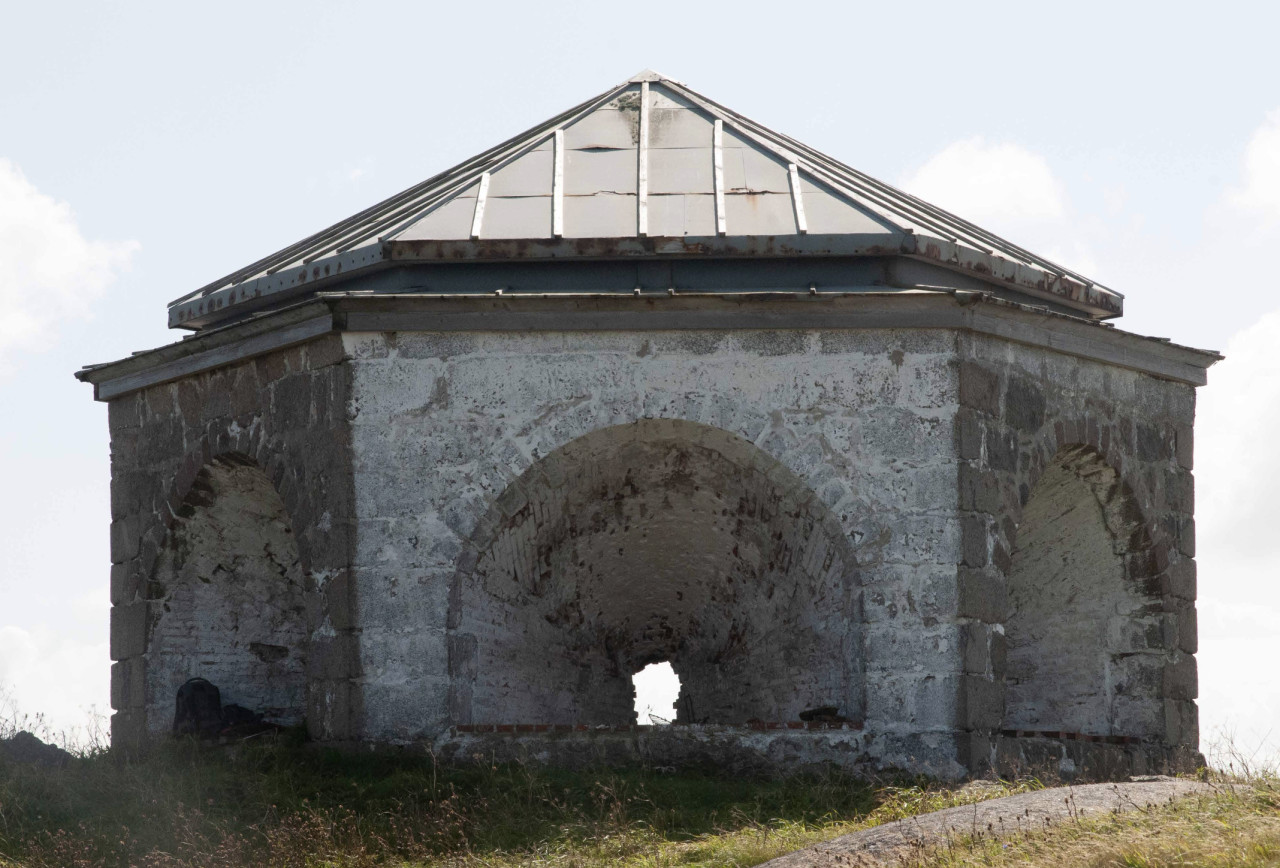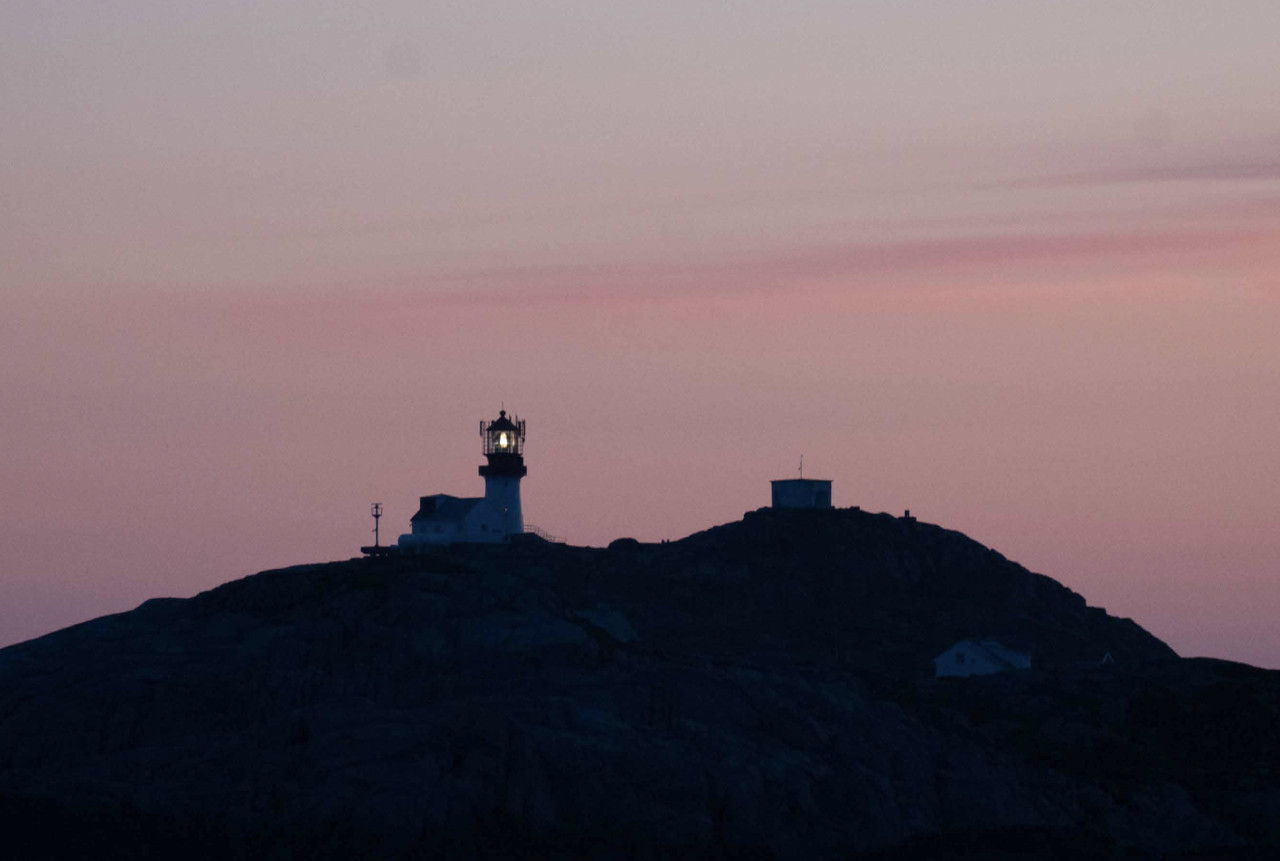IX. The Lighthouses Today

Markøy
When the Markøy Lighthouse was shut off in 1842, it was one of the first lighthouses to close down in Norway. The foundation of the coal-fired lighthouse remained untouched until 1969, when a group of French and Norwegian students began restoring the ruins. They improved the battered structure, however, using non-authentic materials like cement and Leca blocks.
At the same time, a low pyramid-shaped roof was placed on top of the foundation, preventing humidity and frost damage. The Lindesnes lighthouse keepers have since maintained the Lindesnes and Markøy Lighthouse ruins with regular check-ups and whitewash.
The Friends of Markøy Foundation was established on June 21, 2019. The foundation aims to reinstate and restore the Markøy Lighthouse. Their goal is to recreate the original coal-burning Lighthouse as it appeared between 1822 and 1844. In 2025, a copy of the iron coal basket was made. It will be placed at the coal-burning Lighthouse.

Lindesnes
In 1915, a new cast-iron lighthouse was erected at Lindesnes.
The lens apparatus and the cast-iron bottom floor of the lantern house were transferred from the old lighthouse to the new one.
In 1920, a machine house was added, and a fog signal was established. Until the 1950s, it was a foghorn, and later a powerful Diaphone.
During WWII, the Lighthouse was occupied by Nazi German soldiers and a small 4-cannon coastal fort with several guard posts was established. By 1943, the cannons were removed and replaced by a large radar, making Lindesnes an ocean surveillance fort.
Lindesnes Lighthouse has nearly 100,000 visitors annually and is one of the most popular destinations in Southern Norway.
Lindesnes Lighthouse is a coastal museum and the administration office of the Museums of Norwegian Coastal Administration.
Every night, the Lighthouse lens rotates and throws its beams across the Ocean. One blink of light every 20 seconds lets people at sea know that it is Lindesnes Lighthouse they see.